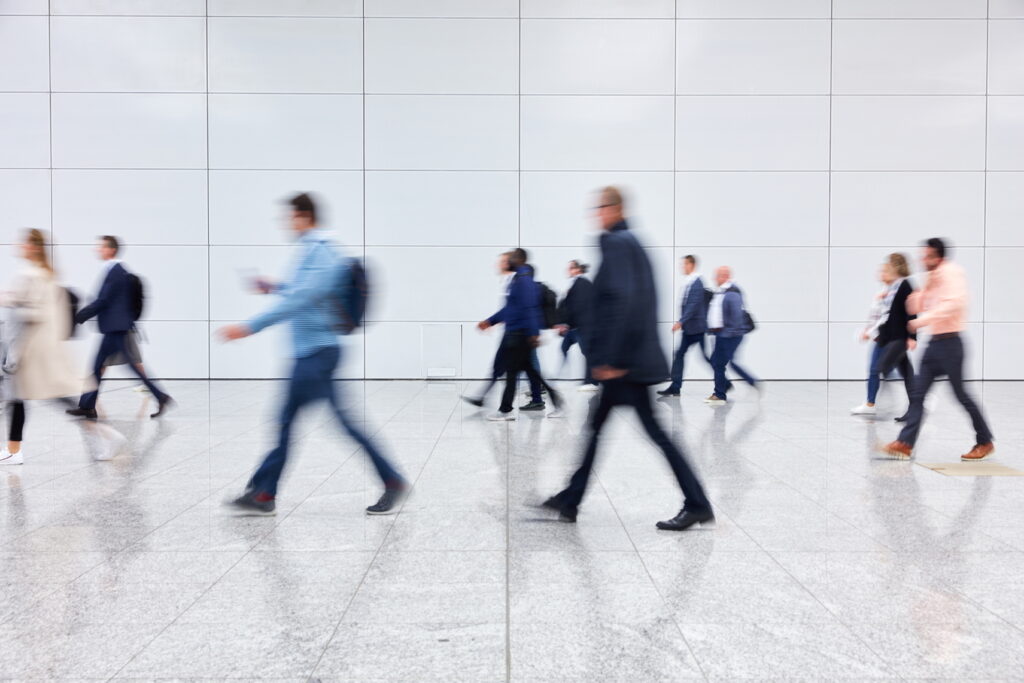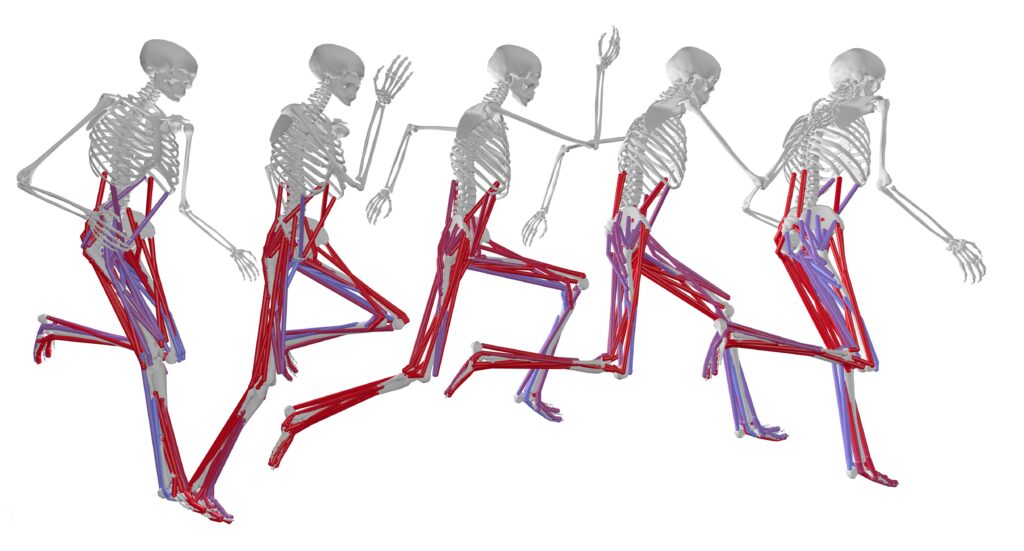Walkable cities linked to more daily movement, study finds
Collaborators

In a countrywide natural experiment, Wu Tsai Human Performance Alliance researchers tracked smartphone users across 1,600 U.S. cities and found a link between a city’s walkability and physical activity levels.
By Kristy Hamilton

Canva Pro Images
Have you ever thought that relocating to a more walkable neighborhood could help you move more? If so, your suspicion was right. A new study analyzing over 7,400 relocations across 1,600 U.S. cities supports what many city planners and public health officials have suspected for years: Walkable cities encourage people to be more active.
“This natural experiment sought to answer an important yet challenging question that the public health field has been attempting to answer for decades, which is whether changes in people’s built environments can actually lead to changes in their physical activity levels,” said study author Abby King, a Stanford Medicine Professor of Epidemiology & Population Health.
The research, published in Nature, used smartphone data from more than two million Americans. From this dataset, the researchers focused on a group of 5,400 people who relocated between cities over a three-year period. They found that people who relocated to cities with higher “Walk Scores” – a measure of walkability ranging from 0 to 100 – added on average 1,100 steps per day to their routines, or about 11 extra minutes of walking.
For example, users who moved from lower-walkability cities to New York City (Walk Score 89) increased their average daily steps from 5,600 to 7,000. Those who left New York for less walkable areas lost a similar number of steps.
Conversely, moving to a less walkable city (Walk Score of 49 or less) led to a decrease in daily steps, while relocating to a city with similar walkability was associated with no change in walking levels. The findings offer strong evidence that the design of our cities can influence how much we walk and perhaps even our health.

“It was exciting to have this rich, longitudinal dataset with activity across months and years to unravel how your environment impacts your activity,” said study author Jennifer Hicks, Executive Director of the Wu Tsai Human Performance Alliance at Stanford University.
Previous studies have hinted at a link between walkable environments and increased physical activity, but they’ve often been limited by small sample sizes, self-reported activity data, and cross-sectional designs that couldn’t determine cause and effect (e.g., do walkable cities make people more active, or do active people choose walkable cities?).
So the team turned to the Azumio Argus fitness app, which uses smartphone accelerometers to track daily movement. The team analyzed over 248,000 days of minute-by-minute step counts. By comparing people’s step counts before and after they relocated, the researchers isolated the effect of the environment from personal habits.
“I was surprised and incredibly encouraged by the fact that greater walkability led to significantly greater daily steps across nearly all age and gender groups,” said Hicks. “Individuals had greater daily steps in a more walkable city regardless of how active they were before they moved and regardless of what their body mass index is.”
The one group where the researchers didn’t see a significant relationship between walkability and daily steps was in older adult women. This suggests that other factors could be barriers to physical activity.
What Makes a City Walkable?
Many different features contribute to a city’s walkability. In this study, the researchers used the Walk Score to determine that metric. The Walk Score rates neighborhoods based on the distance to nearby amenities, and also considers factors like population density and street layout. The score draws on data from multiple sources, including Google, the U.S. Census, and user contributions.
Find Your City's Walk Score
If you’d like to see your city’s Walk Score, you can check it out here.
While walkability sounds like a factor people deliberately seek out when they relocate, census data suggest otherwise. Between 77 and 98 percent of people who move are doing so for family, work, or housing-related reasons. The researchers also found that movers and non-movers looked much the same in age, gender, weight, and past physical activity levels. Together, these findings suggest that changes in physical activity levels were due to changes in their environment, rather than a pre-existing preference or motivation to move more.

During the study, 5,424 participants relocated 7,447 times between 1,609 U.S. cities. Circle area is related to the number of relocations to and from the city, with larger areas corresponding to more relocations. Credit: T. Althoff, B. Ivanovic, A.C. King, J.L. Hicks, S.L. Delp, and J. Leskovec. “Countrywide Natural Experiment Links Built Environment to Physical Activity.” Nature, 2025.
Why City Design Matters
America faces a rise in inactivity. More than one in four U.S. adults is physically inactive, according to the CDC. Physical activity has a host of benefits including reducing chronic conditions like cardiovascular disease and improving mental health. That sedentariness contributes to chronic diseases, including obesity and cardiovascular disease. Could making neighborhoods more walkable be part of the solution?
To find out, the team ran a simulation to predict how improving walkability could increase the number of Americans meeting U.S. national guidelines of at least 150 minutes of moderate-intensity aerobic physical activity per week. Their model estimates that if all U.S. locations reached the walkability level of Chicago or Philadelphia (Walk Score 78), about 11.2%, or 36 million more Americans, would meet the guidelines. If all locations matched New York City, that number could rise to 14.5%, or 47 million more Americans.

“While most of the digital health interventions and programs currently being offered in the physical activity area have been focused almost exclusively on the individual, behavioral scientists have long known that behavior doesn’t occur in a vacuum,” said King. “The physical and social contexts surrounding all of our behaviors play a huge role in affecting what we do on a daily basis. This study adds significantly to that body of research.”
That said, the authors acknowledge some limitations. The study relies on smartphone data, which may over-represent people of higher income or those already interested in tracking their health. And while step count is a powerful measure, it doesn’t capture all forms of exercise, like biking or swimming.
Future work could investigate which features of the built environment most effectively promote activity to best guide policy on urban design.
“Despite the explosion of wearable devices and smartphone apps to track physical activity and other health behaviors,” added Hicks,“we have only scratched the surface here in terms of our ability to learn how to use this data to help people be more active and optimize their health and performance.”
The work is part of the Wu Tsai Human Performance Alliance Digital Athlete Moonshot.
Co-authors include first author Tim Althoff, Boris Ivanovic, Scott Delp, and Jure Leskovec. The work was funded by the National Institutes of Health (NIH), National Science Foundation, Bill & Melinda Gates Foundation, and the Wu Tsai Human Performance Alliance.
Media Coverage: MSN, ABC News, CBC, Forbes, Outside, Bioengineer, Grist, USnews, Women’s Health, See All Media Coverage
Latest News

September 23, 2025
In sprinting, where the foot lands may be key to speed

September 17, 2025
Cyclists with similar power use different muscle strategies

September 15, 2025
A new framework for trusting modeling predictions in biology
Get Engaged
Join our mailing list to receive the latest information and updates on the Wu Tsai Human Performance Alliance.
